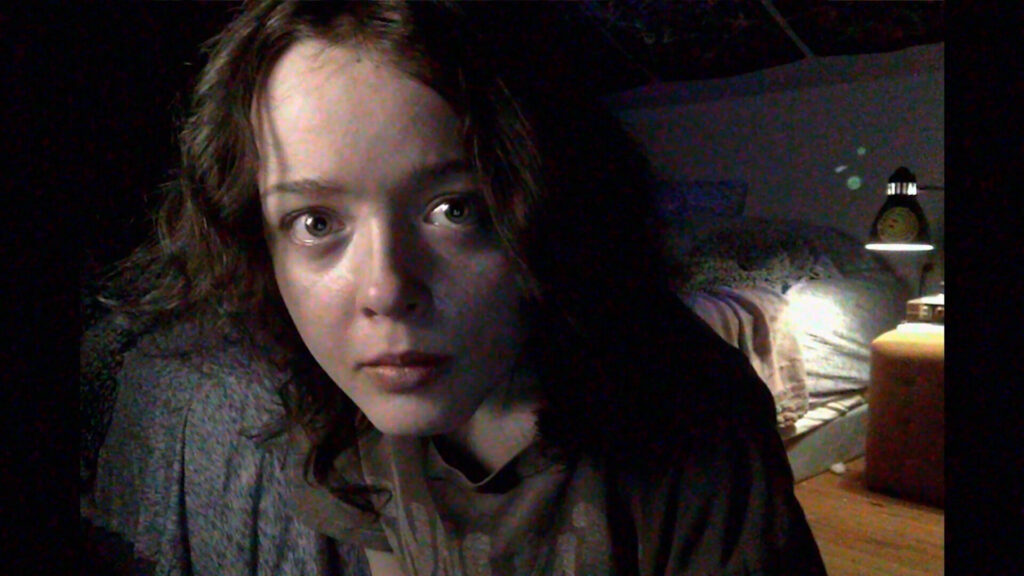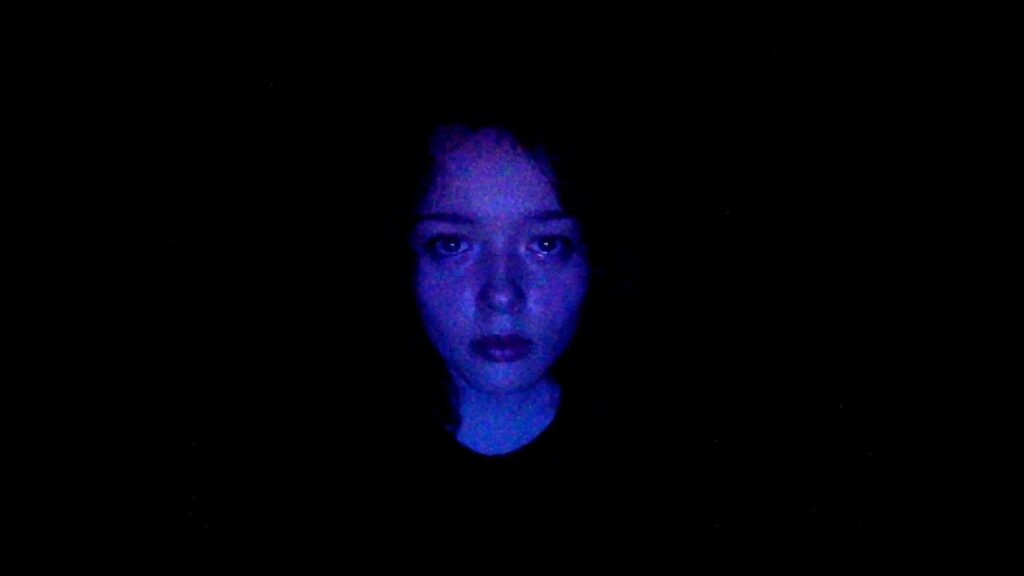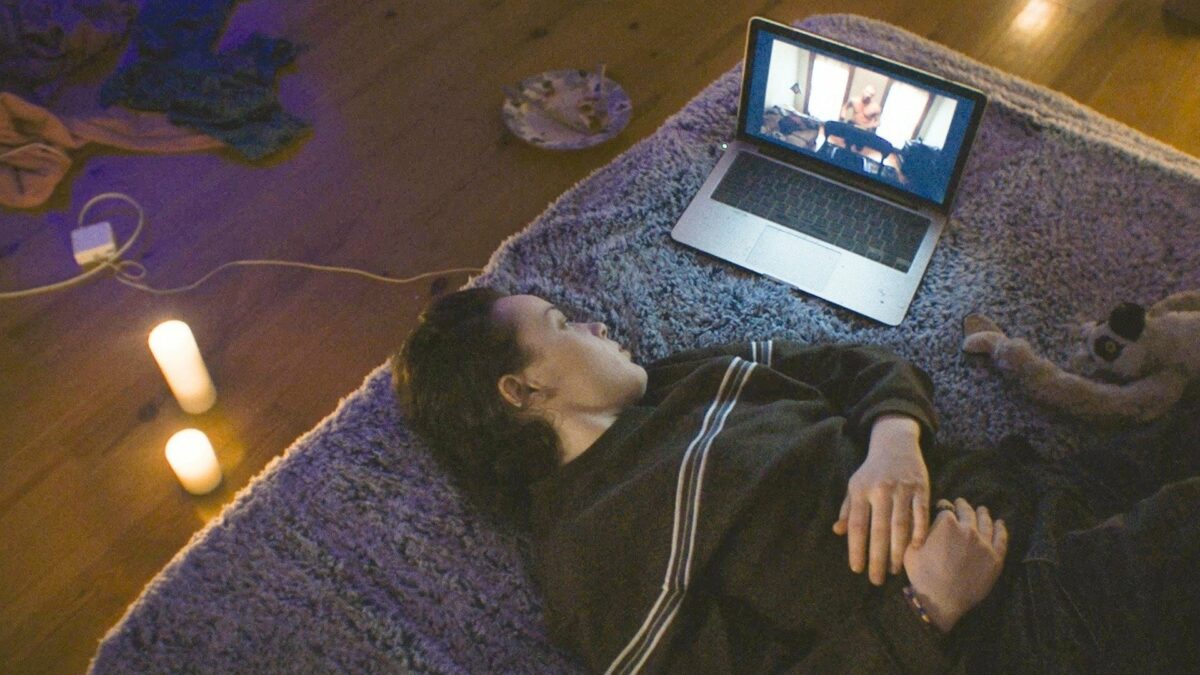I saw the laptop glow
People who spend major portions of their lives online exist in an ever-churning cycle of content and reactions and distortions.Ideas flow and take on lives of their own in a virtual “space” that exists entirely in our collective minds and rendered on glowing screens. It isn’t real, in a physical sense, but in a psychological sense, it’s as real as any made up concept we all buy into that allows society to function: property boundaries, laws, currency.
But it’s so distorted from reality that it gets messy, and fast. You don’t need me to tell you that identity becomes hazy online. We weaponize anonymity. We create avatars and personas, carefully curating how we present ourselves. Even if we use our real names and faces, we can shield and obfuscate ourselves more than we ever could in face-to-face interactions. The nebulous space of “online” can be a destination of reality — the one place where we can be honest about what we truly are — or a destination of escape — the one place where we can avoid it.
Sometimes the reality and the escape are so blurred together that it can be hard to tell the difference. And that’s when shit gets weird. How do you know what to believe about the people you encounter as an abstraction on a screen? How do you even know what to believe about yourself when you become the same? The screens in our lives, just like any filter we introduce between ourselves and the physical world (e.g. drugs, obsession, religion, etc.), can force us to lose sight of what is real and what is not; they can even cause us to struggle to define “reality.” Who says our digital lives must be any less authentic or rich than our physical realities? Especially when we loathe those physical identities?

These are some of the ideas that Jane Schoenbrun probes with their first fiction film, We’re All Going to the World’s Fair from 2021. It’s a natural evolution of their first-ever feature film, the documentary A Self-Induced Hallucination, which investigates the rise of the Slenderman myth from these very same ideas, drawn entirely from real-life YouTube clips. We’re All Going to the World’s Fair, by contrast, is made up mostly of fake YouTube clips.
We’re All Going to the World’s Fair is the first movie I’ve ever seen that genuinely captures the feeling of growing up as a lonely person who spends most of their lives in front of a screen. The closest before this was the fantastic Eighth Grade by Bo Burnham, which is structured around its middle-school protagonist Kayla running a little-seen YouTube channel as a way to boost her own confidence. But We’re All Going to the World’s Fair takes it to a new level: Everything is filtered through the escape of the tiny screen, lo-fi and pixelated.
If it seems like I’m vamping and rambling a lot as prelude to talking about the actual movie, it’s because there’s not much there there. We’re All Going to the World’s Fair barely has a story: It’s a low-narrative, slice-of-life, coming-of-age story dressed in creepypasta aesthetics. It teases itself as a horror film, but it’s not especially horrifying. If anything, you might call it unsettling and uncanny. (The backseat car scene from Eighth Grade is miles scarier than anything here.)
The premise, inasmuch as it ever takes shape, is that Casey (Anna Cobb) participates a viral challenge called “The World’s Fair.” Participants film themselves muttering a “Bloody Mary”-like chant and pricking themselves in the finger with a safety pin. This supposedly initiates a curse-of-sorts that breaks down your control of and connection to your own body over the ensuing weeks.
What ends up afflicting Casey is not any sort of curse or demonic possession that horror movies typically traffic in. It’s more complicated than that. We gather that at least some participants view it as an ARG where you must be “in-character” — you must act as if your World’s Fair symptoms are real, even if they are not. Casey falls in this blurry ambiguity: It’s never clear just how much Casey sees the World’s Fair curse as a game or an actual physical manifestation. It gets even hairier when we learn that she has ongoing mental health problems whose symptoms would double as World’s Fair effects. So is she really possessed by a curse? Is she going through real medical symptoms, perhaps exaggerated to increase her engagement in the “game”? Or is she completely fabricating it to garner views and curious clicks? The truth is probably some blurry mix. We don’t know. We can’t know. Casey’s world is a haze, both visually and thematically.

Throughout the film, Casey gradually connects with a fellow World’s Fair participant, a grown man who goes by JLB (Michael J Rogers). If we don’t know much about what Casey is really thinking and feeling, we know even less about JLB: Is he more of a creep sending bossy messages to exert control over vulnerable teen girls? Or is he more of a mentor encouraging fellow players of the virtual game most in need of affirmation? Again, we can’t know, but we get the impression that both are true.
(I strongly suspect that JLB is based on a real-life experience that Schoenbrun described in their essay that accompanied the release of A Self-Induced Hallucination of a strange and unhealthy relationship they had with an older person as a young teen. Both that essay and their previous film are in extensive dialogue with the content of We’re All Going to the World’s Fair, and my familiarity with Schoenbrun’s past work significantly improved my engagement with this film.)
There is one scene near the climax where the tension of all of these ambiguities comes to a head — a confrontational Skype call between Casey and JLB. It’s the lone scene of the film that had me breathless and tense. One party views it as an attempt to break down virtual walls, to reach out more meaningfully across the screen. The other views the call as an outright betrayal. It’s tense, and it upends our understanding of each character — in part because we can never believe that what each of them is saying is what they really believe, or whether it’s part of a virtual act. (Or, again, both.) The layers of both deception and self-deception amplify the sense of a truthless and amoral virtual world. This, by my reading, is the film’s central theme: What happens to our soul when we live our lives on a screen?

I can see why We’re All Going to the World’s Fair has garnered strong reactions both positive and negative. Some of my friends have panned it, and I understand: The film is intentionally obtuse and poorly produced in order to generate a specific psychological effect. That’s the aesthetic, even when it doesn’t have much meaning. For example: The film includes, for no clear reason except mood-setting, multiple minutes of an ASMR video. It comes and it goes and we move on and it never comes up again. That’s not the only bit of fluff in the runtime. Shit; the runtime is mostly fluff. If you’re not catching its vibes, there’s pretty much nothing there for you to latch onto.
Particularly problematic to me is the final scene. I did not expect the movie to have an exciting, traditional climax, but I wasn’t prepared for something quite this anticlimactic: A film-closing monologue recounting a real-life encounter that seems faker than anything we’ve just seen on a laptop screen. In the scenes leading up to the finale, the film’s theme and perspective start to crystallize, but in those final moments Schoenbrun disassembles it once more, like a game of 52-pick-up. I remain thoroughly baffled about what I’m supposed to think or believe about any of its characters, or even what to feel about them. This uncertainty is not a fun, mind-bendy sort of puzzlement, but an alienating gesture, a refusal to meet the viewer on any level. I was waffling whether I actually liked the film as I watched the final act; the very ending locked in a distinctly negative reaction and a soft thumbs down.
But in spite of my complaints, in spite of the fumes of narrative content the movie is running on, I don’t hate We’re All Going to the World’s Fair. I do wish it was more of a, you know, actual movie. Even if it stuck to its aesthetic, it should at least set and follow some internally-consistent rules rather than the freeform schema it lands upon (or, rather, never lands upon). But the creepypasta vibes are there, and I can ride it, at least a little. Again, this is not a real thriller or horror film. It’s a kooky li’l pseudo-found footage coming-of-age flick. It can indeed survive on vibes alone, and it nearly does.
There is something genuinely haunting about Casey’s descent, hazy and ill-defined and possibly constructed though it may be. Her nonlinear arc — she’s coherent and articulate one scene, totally scattered and messy the next — is actually realistic for an unstable teen in the process of molding her adult identity. This flawed, fractured humanity makes Casey more sympathetic to my eyes than a squeaky voiced, inarticulate depressive in a teen movie might otherwise be.

The low production values do create a lo-fi texture that is intermittently pleasing. It really does capture the sensation of staying up until 3 AM with all the lights out except the laptop twelve inches from your face, the glow from the screen delivering me toxic LED sunshine. Vitamin 0 and 1. But, again, it’s intentionally “bad” in a way that demands you appreciate it on its own terms if you’re going to appreciate it at all. Schoenbrun is clearly okay alienating large swaths of their potential audience.
There’s one layer to this film and its reception that have made it a significant film more than a good one. It paved the way for Schoenbrun’s follow-up I Saw the TV Glow, which is one of the indie sensations of 2024. Many queer folk, especially trans people, have identified We’re All Going to the World’s Fair as an important piece of queer cinema even though queerness is not the film’s subject at all. I’m a cishet male, and this theme did not really register for me, but critics and fans cite this film as tenderly capturing the anxiety and self-loathing of gender dysphoria. I suppose I can see it if I squint: Casey’s World’s Fair feeling of distance from her own body and physical reality, of trying to understand and articulate some strange sensation or rising otherness in herself, is palpable. Throughout the film, Casey constructs a version of herself that’s different from the body she was born with, perhaps in the way a trans person would. And that’s even more resonant once you learn that Schoenbrun came out as trans during the making of this film.
The final product is a film that’s a lot more interesting to think about than it is to actually watch. It’s a little whiff of a flick in which sloppiness and anticlimax are part of the point. I can’t quite say it all holds together. But it does something genuinely new and profound: We’re All Going to the World’s Fair pierces through the veil of living most fully in front of a screen in a way that no other coming-of-age movie ever has.
Is It Good?
Nearly Good (4/8)
Dan is the founder and head critic of The Goods. Follow Dan on Letterboxd. Join the Discord for updates and discussion.


6 replies on “We’re All Going to the World’s Fair (2021)”
Still feel like this borders on After Last Season bad, and can’t comprehend its warm reception. Might still watch I Saw the TV Glow anyway, as there’ve been other filmmakers who’ve bottomed out this hard for me and still come back well, after all.
I did spend a little bit of time thinking about why I didn’t bounce hard off of this. Some of it is certainly that I had just watched Schoenbrun’s Slenderman YouTube “documentary,” and as soon as this started, I realized “oh, this is just the fictional version of that.” That put some shape to the film that maybe isn’t actually there in the text. I also am just sympathetic to most coming-of-age stories as awkward and fumbling, and I guess that bleeding to the form. (I really didn’t see this as a horror film at all)
There’s something else, too, which is that it’s been awhile, like multiple months, since I have reacted really negatively or even really positively to a film I’m watching for the first time. I don’t know if this is some sort of emotional numbing or burnout or degradation of my critical faculties. But I’m ambivalent and noncommittal a lot these days, even when I wish I wasn’t. As a wise man once said, “Good taste is better than bad taste, but bad taste is better than none”
I stole that and I believe I recall the guy was talking about actual food. :[
And it is legendarily boring and inept but I have a soft spot for After Last Season since the lead actor offered to call into my podcast to discuss it after I messaged him on social media to say hi. There’s a fan edit of the film that someone recently published called “The Coherent Cut” that I haven’t watched but trims out about half the runtime. Why some people do this, I’ll never understand.
Oh yeah, I remember now. Well, it wasn’t that dude’s fault. I’m actually glad it exists because it feels like an objective or at least very ready answer for “worst movie I ever saw.”
Scrolling through the trash heap of YouTube as I work: “The Existential Dread of False Ceilings.” You know, drop ceilings, with acoustic tiles. THE EXISTENTIAL DREAD. It goes on for sixteen minutes talking about that, apparently.
265,000 views.
I do concede this film captures something of our times.